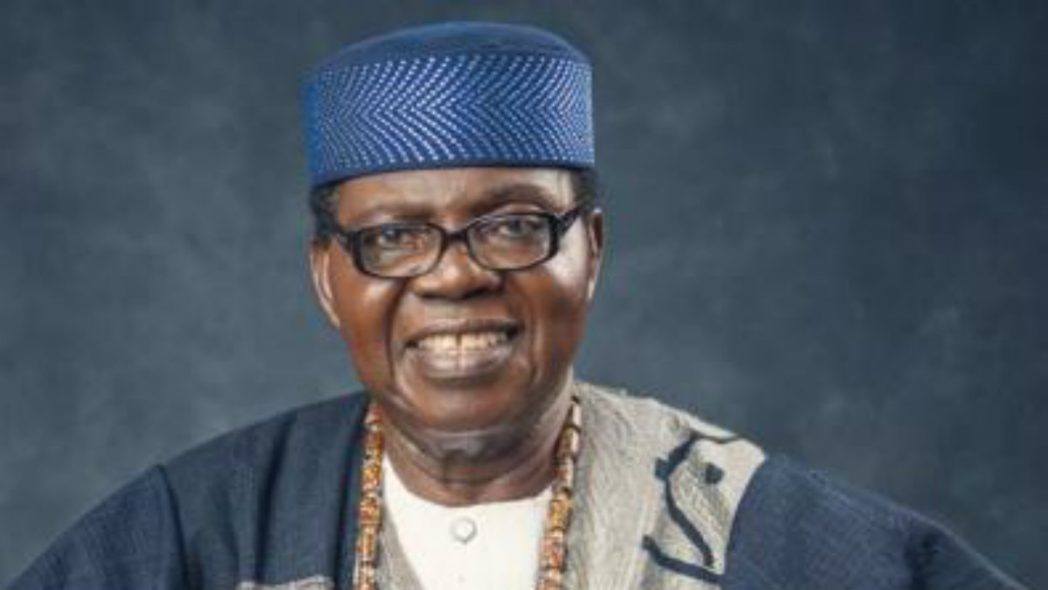Los Angeles News

Los Angeles has recently been shaken by a series of unsettling events, ranging from allegations of racism within the Los Angeles Police Department (LAPD) to housing displacement and a bitter feud between tech billionaires. These stories, while seemingly disparate, paint a complex picture of a city grappling with issues of social justice, economic inequality, and the rapid advancement of technology.
A complaint filed with the LAPD detailed how a Los Angeles police officer working in the recruitment office secretly recorded dozens of conversations in which fellow cops hurled racist and derogatory comments against Black police applicants, female colleagues, and lesbian and gay co-workers, according to a complaint filed with the LAPD. The complaint, a copy of which was reviewed by The Times, details portions of roughly 90 recordings made in the department’s Recruiting Division Personal History Section and portrays officers and supervisors voicing open discrimination against potential recruits and colleagues based on race, sex and sexual orientation. These same officers were tasked with deciding who could join the LAPD. Details of the complaint were shared last month with Mayor Karen Bass, who told The Times that the allegations were “especially outrageous and unacceptable.” The actual language that the officers used, however, has not been reported until now. Attempts to reach the officials named in the complaint were unsuccessful. The conversations were recorded between March and October in the city’s personnel building several blocks from police headquarters. In the complaint, LAPD Sgt. Denny Jong, who is Asian, stands accused of leading the prejudicial banter. In one conversation with subordinates about Dodgers baseball legend Fernando Valenzuela’s death from septic shock, he said: “I know why he died, he ate too much Tacos,” according to the complaint. The officers referred to other colleagues they believed to be queer with a slew of derogatory terms, and, in unrecorded conversations, the officers reportedly referred to Black people as monkeys, the complaint said. Lt. Louis Lavender, who oversaw the section, “witnessed and heard these conversations going on ... [He] has done nothing,” the complaint alleges. In November, Lavender, who is Black, walked into the office and was told by an officer, “You’re just in time for the naked mud wrestling.” Lavender replied, “Man, we’re going to end up in the L.A. Times the way you all talk in here. You all can bring down the whole department.” Department officials said they have made their investigation into the matter a top priority, assigning three investigators, a lieutenant and a captain to the case. They have started to pore through the recordings and interview some of the officers in the unit. The city’s personnel department is running a parallel probe into what impact the case might have had on the Police Department’s recruitment efforts. The department is haunted by a sordid history of officers caught making inappropriate remarks.
The incident has sparked outrage and raised concerns about the culture within the LAPD, particularly at a time when the department is already struggling to recruit new officers. The scandal has also highlighted the ongoing challenges of addressing systemic racism and discrimination within law enforcement agencies.
Meanwhile, in the El Sereno neighborhood, Maria Merritt faced eviction from her home, a place she had reclaimed after a period of homelessness. Her story, like so many others, is tangled up in the California Department of Transportation’s half-century epic over the failed 710 Freeway expansion — and the homes the agency acquired to build it. Merritt’s swings with the ups and downs of her fragile mental health. She rented the two-bedroom Poplar Boulevard cottage in 1995, living there a dozen years before tragedy, addiction and mental illness left her unable to pay the rent and led her kids to scatter. More than a decade of homelessness followed, at times spent sleeping in a median strip that stretches along the neighborhood’s main drag. Then, one morning in spring 2020, she watched a group of Angelenos move into vacant, Caltrans-owned homes in protest against L.A.’s homelessness crisis. The next day, the activists helped Merritt seize the Poplar Boulevard home, which had remained empty since she’d abandoned it. Inside, she found decades-old photos of herself and her children. A pressure campaign from group members, who call themselves Reclaimers, pushed the transportation agency to legalize the living situations for Merritt and the others. Caltrans contracted with the Housing Authority of the city of Los Angeles to allow a dozen Reclaimers and those in similar situations to live and pay rent for two years in refurbished properties. Merritt wanted to stay forever. Now that the freeway project is dead, more than 30 Caltrans tenants and counting are buying their homes at bargain rates. Scores of vacant properties are being sold off as affordable housing. Merritt believed owning the house would help atone for the hurt she’d caused her children and bolster her efforts to repair their relationship. But Caltrans said Merritt didn’t qualify for the purchase plan, and in 2021 she had to move out of the Poplar Boulevard home, which the government agencies deemed unsafe, to another state-owned house nearby. Since the two-year agreements have long expired, the housing authority had been trying to force Merritt and the remaining group members out. Merritt intended to fight her eviction. Her second stint in El Sereno homes gave her the stability to kick her methamphetamine habit, steady her mental health and apply successfully for Social Security disability benefits. She believed leaving would threaten her progress.
Merritt’s experience highlights the complex intersection of housing, mental health, and government policy. While she eventually secured an apartment in Westlake, her story serves as a reminder of the ongoing struggle to provide stable and affordable housing for all Angelenos.
On a lighter note, one individual embarked on a unique quest to play tennis at every public court in Los Angeles County. The quest had been my 27-year-old daughter’s idea, and I loved sending her photos taken from the bus of our favorite street scenes, such as dramatic tree shadows and dentist signs with self-brushing teeth. One of the main things that kept me going on the quest was the feeling it gave me of being together with my daughter even though she had grown up and moved away. Happily, I found plenty of partners on social media in all corners of L.A. and from all parts of the globe. I made a new tennis friend from Russia and one from Ukraine. The quest was world peace — until I spoiled it with my slice. The slice is a trick shot. You swing underneath the ball to make it bounce sideways. It’s OK to slice sometimes, but I slice too much because slicing is the physical expression of my dark side: sarcasm. I try to keep it to myself, but on a tennis court, the snark in Mark squirms free. Disregarding my intention to hit straight and true, here comes my slice, and here it comes again. By the middle of my quest, Los Angeles had had enough of my slicing. Except for Timothy, my one new tennis friend who became a close friend, because he slices like a maniac too. Timothy’s ball comes over the net with the this-is-me energy of a dog with his face out a car window. The whole quest has been worth it just to make friends with Timothy, and also to make better friends with Mike the Hat. There were a lot of guys named Mike at our long-running weekend game at Ladera Park near Inglewood, but Mike is the only one who wears a snap-brim fedora. He further distinguished himself by playing with me all over Glendale and Pasadena. I have played on many courts in neighborhoods destroyed by the fires. I recently made a somber trek to one of them, Loma Alta Park in Altadena. The courts are intact but surrounded by devastation. It will be a great day when people can play tennis there again. When my momentum lagged with 50 courts to go, Mike the Hat encouraged me. “This part is work,” he said, and the cheerful way he said it inspired me to make changes. I dropped the public transit rule because there was no way I was going to finish without driving, and I needed to finish so I could find out what happens next. I also leaned into extreme singles, a euphemism I invented for playing alone. Spending all that time by myself on tennis courts reinforced my determination to keep working on making new friends. For example, to celebrate playing the last court on my list, I got a box of churro cookies at La Monarca Bakery & Cafe in Highland Park. I brought them to play doubles at Hermon Park with Timothy and two other guys who are fine with us the way we are. Timothy was wearing a T-shirt of his own design that read “INSECURITY” in big block letters. “It’s like I’m working security but the opposite,” he explained, which led to a jolly conversation about the pros and cons of explaining jokes to make sure people understand why they’re funny. Our joshing made me feel so open-hearted that I offered cookies to the guys playing serious singles on the court next to us. I felt happy when they said heck yeah and even happier when one of them said, “Weren’t we on a tennis team together?” I immediately recognized Will — “You’re that cool guy I always wanted to be friends with!” He said, “Yup, that’s me.” We made a follow-up date and merrily hit together, which makes me feel like my quest was not a failure at making lots of new tennis friends, but more like a preparation for success.
This personal journey highlights the importance of community, connection, and finding joy in unexpected places. It also serves as a reminder that even in a sprawling metropolis like Los Angeles, there are opportunities to forge meaningful relationships and discover hidden gems.
In the world of professional sports, the Los Angeles Lakers have undergone a significant transformation with the addition of Luka Doncic and Markieff Morris. Markieff Morris, standing alongside Luka Doncic, right, brings 14 years of NBA savvy to the Lakers. (Wally Skalij / Los Angeles Times) Adding Morris, one of the NBA’s true tough guy truth-tellers, has bolstered their locker room, a behind-the-scenes advantage that the Lakers have desperately lacked. “I missed him,” LeBron James told The Times. “…We’ve been in the foxhole together. We’ve been on the floor during big games together. And there’s someone whose opinion I value very much when I come off the floor. He’s watching it. He’s seeing it. I’m just happy to have him back. It’s great to see him.”
Morris’s role extends beyond his on-court performance, as he serves as a mentor and advisor to younger players like Dalton Knecht. His experience and leadership have been invaluable in bolstering the team’s chemistry and performance.
NASCAR’s commitment to Southern California remains uncertain as the organization grapples with stalled projects and shifting priorities. NASCAR remains committed to bringing stock car racing back to Southern California. But it admitted this weekend it is still not sure where and when that will happen. “The market is extremely important to NASCAR,” said Dave Allen, NASCAR’s West Region president. “So we’re not abandoning the market. What we don’t have is a firm timeline yet. There’s some things within the sport that need to get sorted before we can make some strategic decisions as it relates to what we’re what we’re going to build. “We’re going to do something. I just don’t know what and when yet.” Allen spoke before Sunday’s Shriners Children’s 500 at Phoenix Raceway, where Christopher Bell notched his third consecutive NASCAR Cup Series win by holding off a hard-charging Denny Hamlin on the final restart with two laps to go. With the exception of 2021, when the schedule was hampered by the coronavirus pandemic, NASCAR has run at least one race in Southern California every year since 1997, when Auto Club Speedway opened on the site of the old Kaiser steel mill in Fontana. That streak will end this year. Auto Club Speedway, which has been torn down, played host to its final race in 2023 while the Clash at the Coliseum, run on a temporary half-mile track installed atop the Coliseum’s football field, did not return this winter after three years. NASCAR had hoped to race on a half-mile oval being built on the site of the former Fontana speedway, but that project has stalled. “That’s option No. 1,” said Allen, the former president of Auto Club Speedway. “Obviously, we’ve been there for a long time. We still retain enough land to build a half-mile oval if we chose to do that. “But we still need some time to sort some things out and figure out if that’s the right thing to do.” In the meantime, NASCAR is embracing concepts outside traditional race tracks. The series debuted a street race in Chicago in 2023 and has reportedly considered racing on the streets of San Diego as well. “We’re always looking for new opportunities,” Allen said. “We’re always looking for either new markets or things that we can do different in a market that we’re already [in]. “We’re trying to leave all options open.” The site is being converted into a logistics facility and industrial park with 6.6 million square feet of warehousing spacing.
The future of racing in Southern California remains uncertain, with potential street races and the possibility of building a new short-track venue on the site of the former Fontana speedway.
In Silicon Valley, a bitter feud between Elon Musk and Sam Altman is shaping the future of the artificial intelligence (AI) industry. Tesla Chief Executive Elon Musk, who has his own AI startup, is duking it out in court and in a public war of words with Sam Altman, leader of ChatGPT maker OpenAI. Musk, who is the world’s richest man and has the ear of President Trump, has referred to the San Francisco-based OpenAI chief executive as “Scam Altman.” Meanwhile, Altman told Bloomberg that Musk is not “a happy person.” Musk and Altman, along with several others, co-founded OpenAI in 2015. Underlying the personal feud is Musk’s legal challenge to OpenAI, which threatens to slow the company’s efforts at a time when the race for the lead in the AI space is heating up.
Musk’s lawsuit against OpenAI raises fundamental questions about the ethics and governance of AI development. The outcome of the case could have significant implications for the future of the AI industry and the balance between innovation and accountability.
Meanwhile, homeowners in Altadena and Pacific Palisades are struggling to navigate the complexities of insurance claims after the devastating wildfires that struck their communities. The family turned out to be one of the lucky ones, with their house on Luna Court still standing the next day, though it suffered smoke damage that made it uninhabitable. After escaping what could have been a total disaster, Franz said he didn’t anticipate what came next — a frustrating claims process with his insurer, State Farm General. Franz said he has been assigned half a dozen different adjusters and is still at odds over the amount of remediation his home needs and had to repeatedly demand payments for long-term shelter as his house is fixed. “I was on the phone for hours and hours and no responses, no phone calls back, and no emails or anything,” he told The Times. “After paying insurance for the last 10 years, and then when you need it, they’re being so stingy with everything.” Jared Franz and his wife, Ingrid, inside their home, which survived the Eaton fire but is uninhabitable due to smoke damage. (William Liang / For The Times) ‘They’re being so stingy with everything’ Such complaints aren’t isolated.
The difficulties faced by these homeowners highlight the challenges of dealing with insurance companies in the aftermath of a natural disaster. The stories serve as a reminder of the importance of understanding one’s insurance policy and advocating for fair treatment.
As the Trump administration threatens federal funding for various projects, local officials and transit experts are concerned about the potential impact on Metro’s expansion plans. The Metropolitan Transportation Authority relies significantly on federal funding for everyday transit operations and for major projects including construction of the Purple Line extension project, that will lengthen the route from Koreatown through the Miracle Mile, and the East San Fernando Valley line, which was awarded nearly $900 million in grant funds under the Biden administration last year. Metro is continuing to assess how much federal funding that has been promised is still vulnerable. “We’ve not had any disruption to the flow of our federal funding at this point,” said Michael Turner, Metro’s executive officer of government affairs. “For decades here, we’ve worked with our congressional delegation, we’ve worked with Republican and Democratic administrations in Washington to advance our program, and we’re going to continue to do that here.”
The potential loss of federal funding could have significant consequences for transportation projects in Los Angeles, potentially hindering efforts to improve public transit and reduce traffic congestion.
California businesses are grappling with rising health insurance premiums, which have outpaced inflation and cut into family incomes. Kirk Vartan pays more than $2,000 a month for a high-deductible health insurance plan from Blue Shield on Covered California, the state’s Affordable Care Act marketplace. He could have selected a cheaper plan from a different provider, but he wanted one that includes his wife’s doctor. “It’s for the two of us, and we’re not sick,” said Vartan, general manager at A Slice of New York pizza shops in the Bay Area cities of San Jose and Sunnyvale. “It’s ridiculous.” Vartan, who is in his late 50s, is one of millions of Californians struggling to keep up with health insurance premiums ballooning faster than inflation. Average monthly premiums for families with employer-provided health coverage in California’s private sector nearly doubled over the last 15 years, from just over $1,000 in 2008 to almost $2,000 in 2023, a KFF Health News analysis of federal data shows. That’s more than twice the rate of inflation. Also, employees have had to absorb a growing share of the cost. The spike is not confined to California. Average premiums for families with employer-provided health coverage grew as fast nationwide as they did in California from 2008 through 2023, federal data shows.
The rising cost of health insurance is a major concern for California businesses and families. The state is trying to lower healthcare costs by setting statewide spending growth caps, which state officials hope will curb premium increases.
The Los Angeles County Museum of Art (LACMA) is preparing to open its new David Geffen Galleries in April next year, with site-specific installations by three artists. The artists — Mariana Castillo Deball, Sarah Rosalena and Shio Kusaka — were all picked based on their previous work at LACMA and for how themes espoused in their art, including land rights and a fascination with the cosmos, fit with the ethos of the new building’s modernist design. “I have a rule in my life: If you get stuck, you ask people for advice. If you get really stuck, you ask an artist,” said LACMA President and Chief Executive Michael Govan during a recent visit to the site, where Castillo Deball was immersed in crafting her piece, “Feathered Changes.”
The upcoming opening of LACMA’s new galleries represents a significant investment in the city’s cultural landscape. The installations promise to be a major draw for visitors and a testament to the power of art to inspire and transform.
Finally, the January wildfires created a highly unusual situation in the local home furnishings market. Thousands of residential structures and everything inside them burned down, setting off a frantic scramble to find new lodging and replace the entirety of a home’s contents. Many of those items, such as furniture and appliances, are typically big-ticket purchases with long life cycles, making rebuying an infrequent occurrence under normal circumstances. Now, sellers of furniture and other home decor around L.A. are seeing an unexpected rise in sales.
The surge in demand for home furnishings highlights the resilience of the Los Angeles community in the face of adversity. It also underscores the importance of supporting local businesses during times of crisis.












